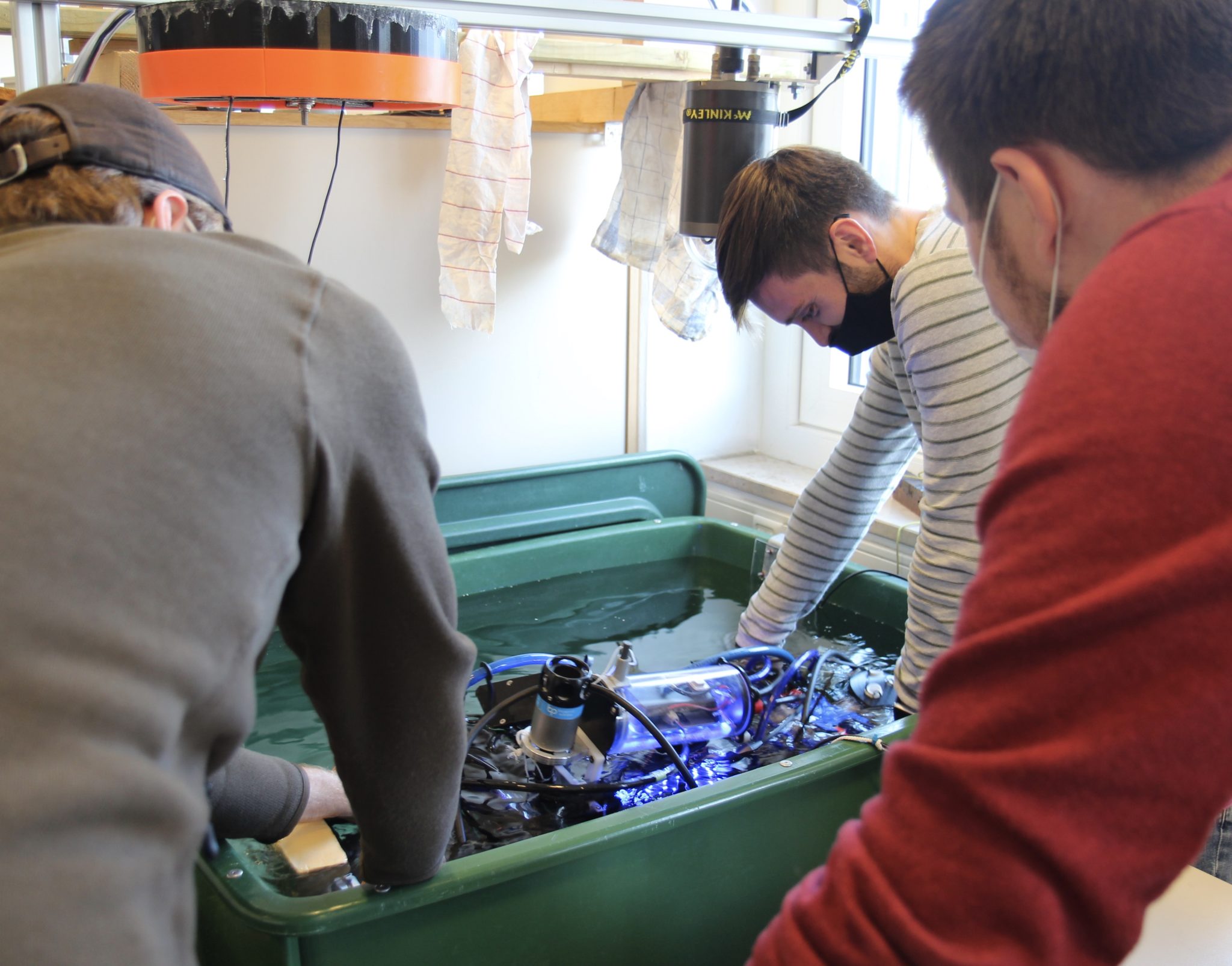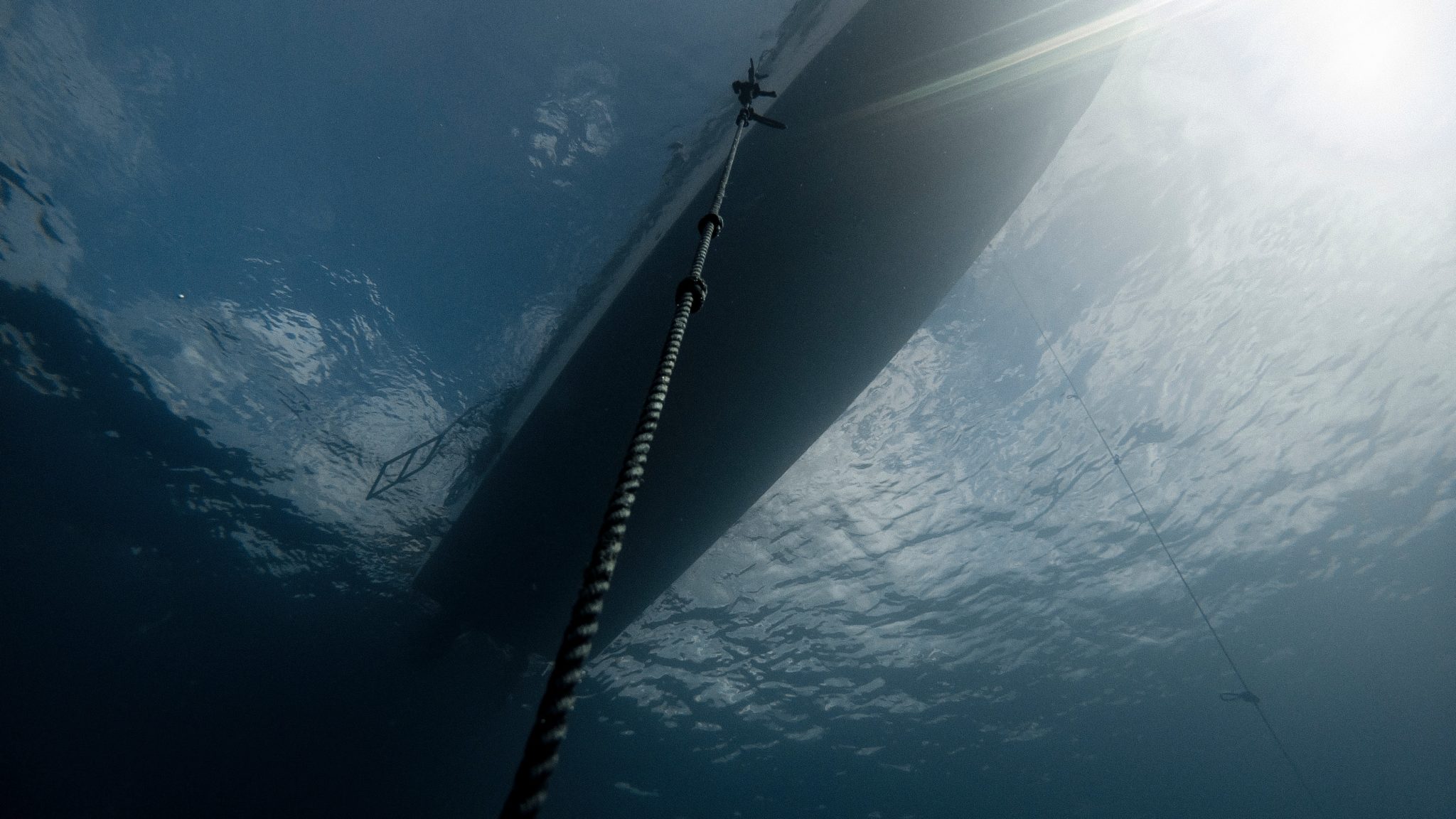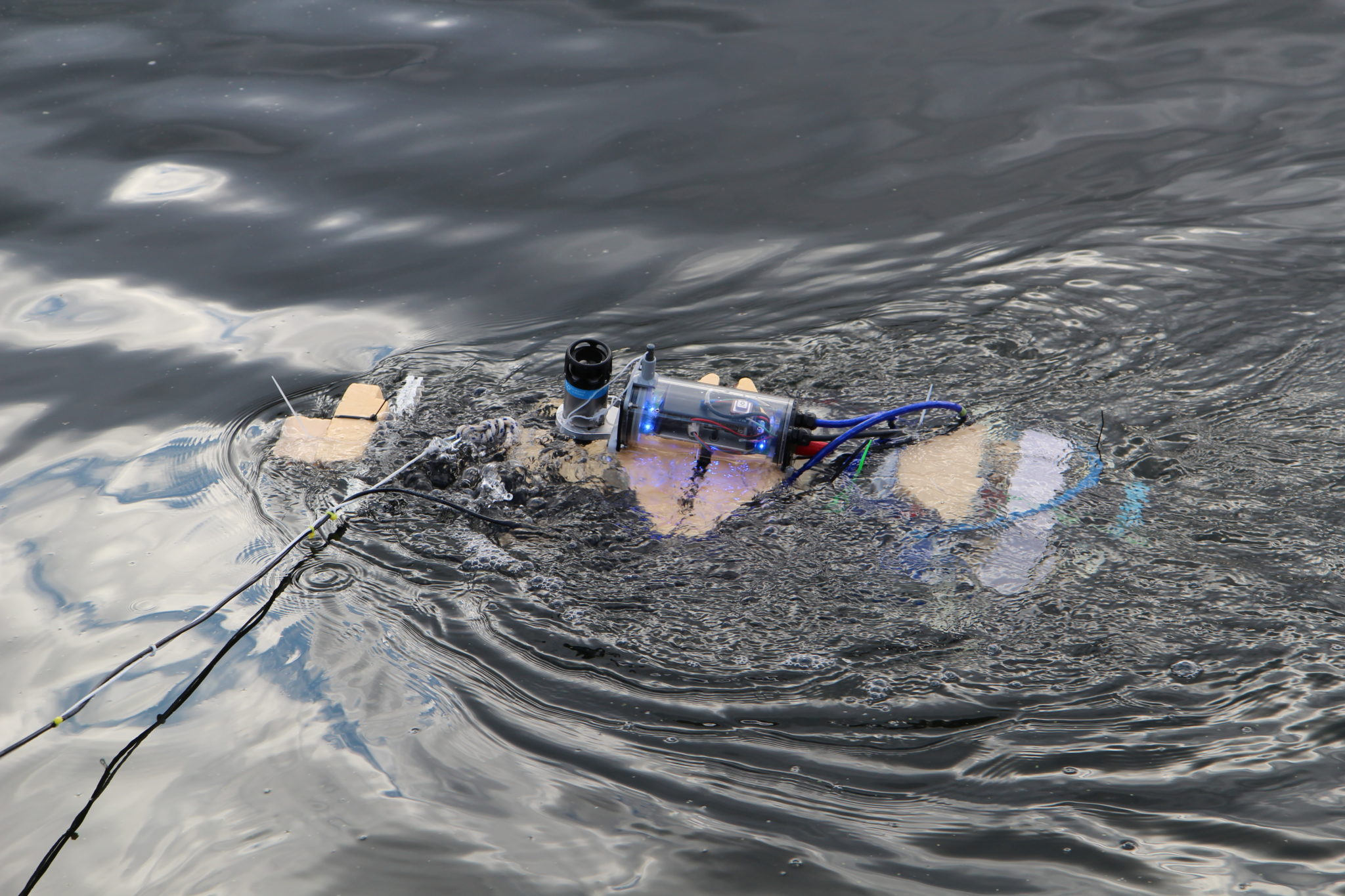In the laboratory of Kiel University of Applied Sciences at the Institute for Communication Technology and Embedded Systems a test marathon took place over three intense days to bring together the work of all partners for the first time. After a long planning, design and construction phase, the aim was to determine whether the systems designed by all partners were compatible with each other. Furthermore, it was to be tested how well the interface communication works and whether installation spaces were calculated appropriately. In the process, problems such as the interference of magnetic communication due to the electrically operated thrust glands could be checked and ruled out.
The working group Digital Signal Processing (AG-DSV) of the Department of Computer Science and Electrical Engineering of the Kiel University of Applied Sciences has developed the demonstrator vehicle "Hexe“ designed, developed and constructed. Derived from Händel and Gretel the demonstrator vehicle was created in the first development phase. Hexe“. Hexe“ is technically composed of both vehicles. In the later course of development, the sensor technology will be divided between the different AUVs. In addition, the installation of the vehicle's drive and sensor integration and the integration of an acoustic communication model have been done.
The Department of Information and Coding Theory of the Faculty of Engineering. of the Christian-Albrechts-University at Kiel is researching a new type of communication module. This will enable communication between the AUVs using an optical and magnetic communication approach. In addition to acoustic communication, the use of optical and magnetic communication can provide a better data rate. Acoustic communication works very stable in long distances, but the water influence causes various problems, such as multipath propagation. Optical communication, which propagates at the speed of light just like magnetic communication, offers high data rates due to a large available bandwidth. Here, the line of sight between transmitter and receiver is decisive for the range. Depending on the type of water body, this can therefore vary drastically.
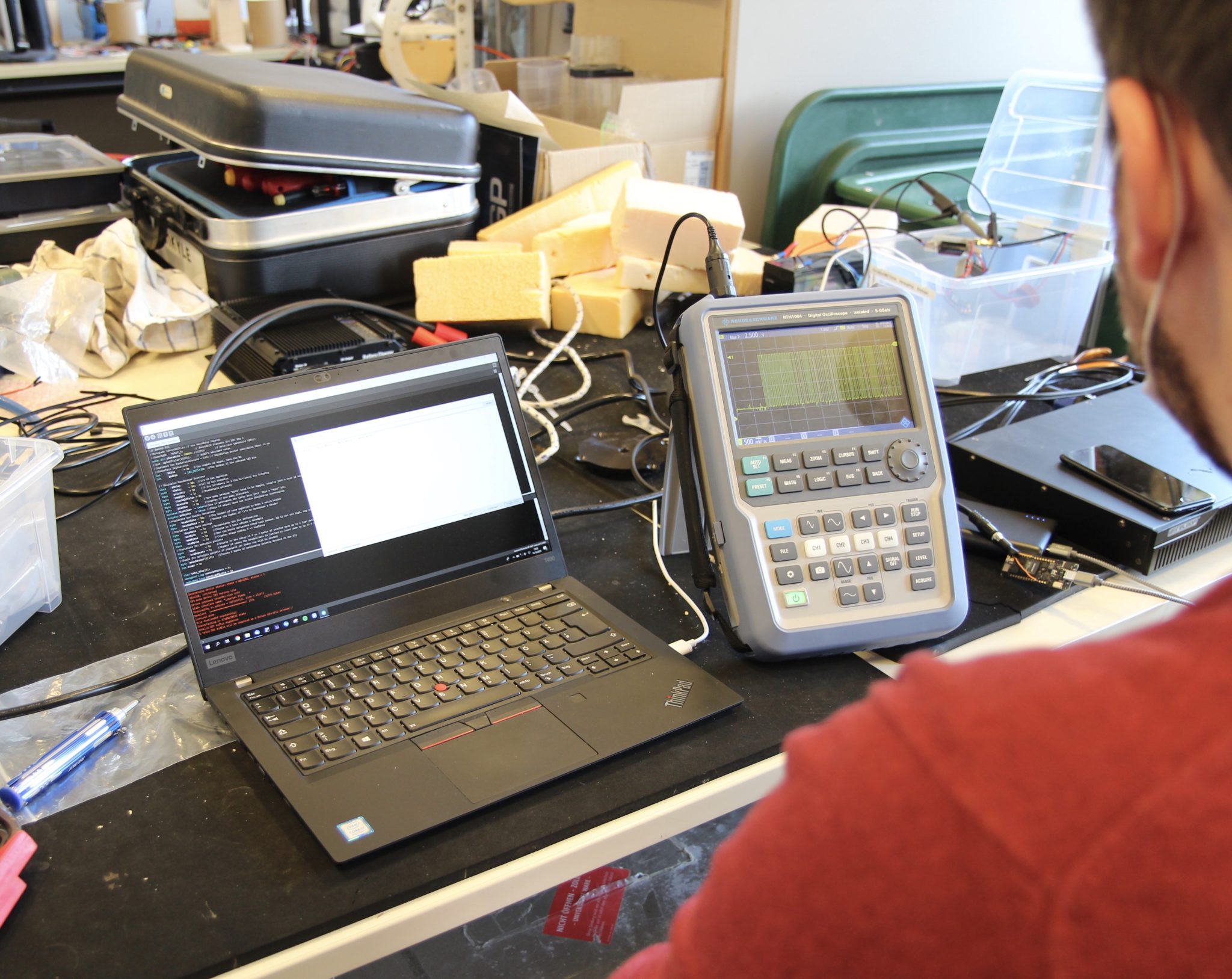
The optical module consisting of LEDs creates a data connection by emitting pulsed light. This happens so fast that the human eye does not perceive the light modulation. The light pulses are detected by a photodiode in the receiver device and converted into a binary format (electrical pulses). The data - such as log data or texts are converted into a binary vector and modulated to a light signal. "Light on" represents a binary 1 and "light off" a 0. In addition to visual transmission, magnetic communication is used. Here, a coil generates a magnetic field through current flow, which contains the data. The data is transmitted by selectively switching the electromagnet on and off. Unlike optical communication, magnetic communication does not require line-of-sight, but is sensitive to the salinity of the water. High salinity causes the range to decrease. By using the different means of communication, the systems can support each other. This ensures a sound connection in many scenarios.
ZAt the start of the test, both modules were integrated into the AUV vehicle for the first time. After some installation work, the first text messages were transmitted. After a blue light flashed several times, the message "Hello World" appeared on the computer a short time later. In addition to text messages, photo and video files are also to be transmitted in the future.
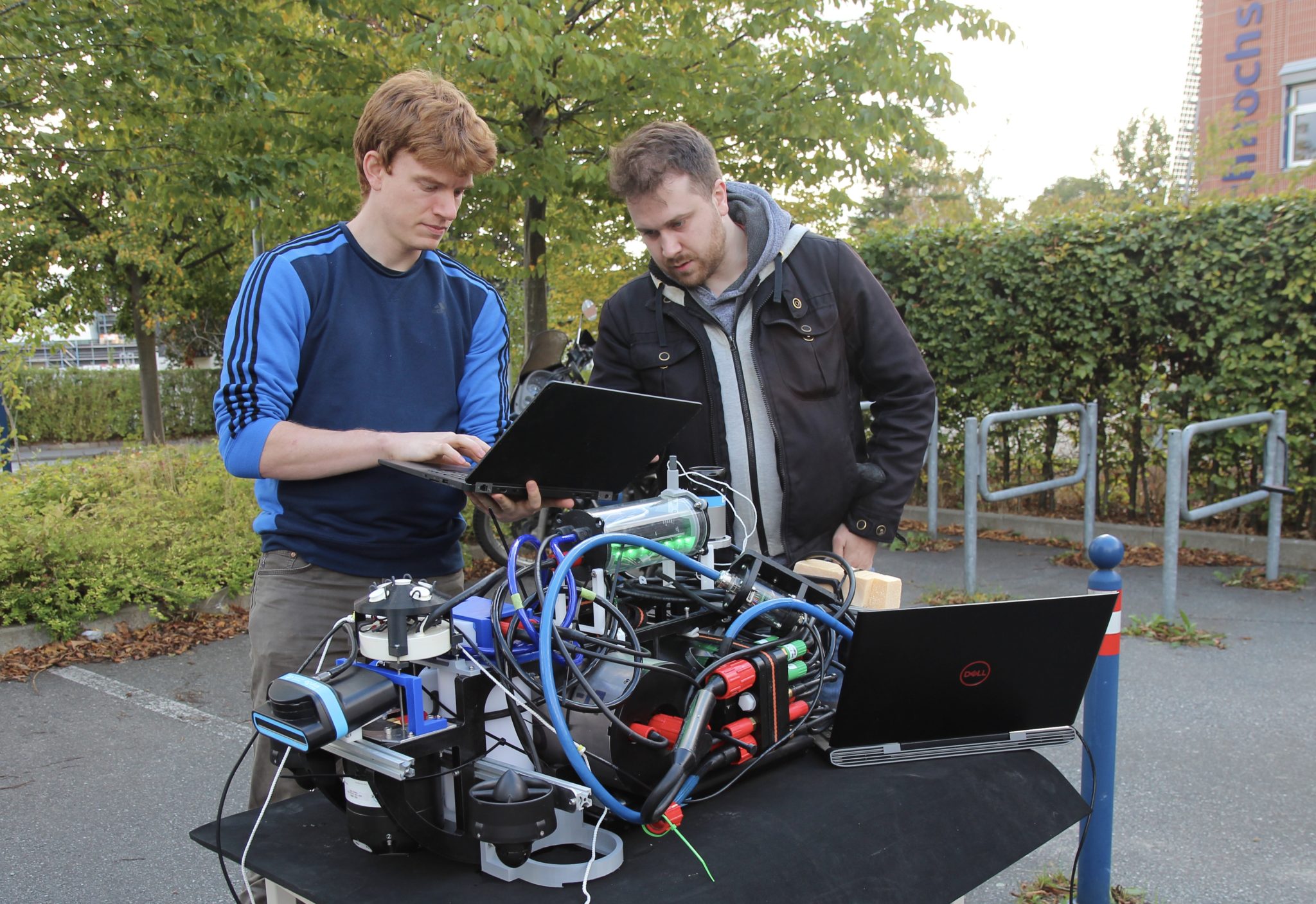
The mission planning software of University Lübeck's Institute of Computer Engineering is largely responsible for the autonomous locomotion and monitoring of the vehicle. The software is designed to enable the user to specify routes that the AUV should travel. At the same time, measurement data is sent back to the software during the journey. The highly developed software enables the AUVs to have a certain kind of "intelligence" that makes it possible to carry out more complex missions. In this context, continuously changing environmental conditions require a high degree of situational responsiveness.
In doing so, mission planning in advance, even in the event of extreme conditions, ensures a robust mission. The autonomy of the AUV is to use missions as a rule set for decision making. Significantly here, the increasing level of autonomy leads to a reduction in the human role for monitoring.
In specific, work is being done to generate a user-friendly interface by means of a graphical interface so that the creation of a mission can be performed by scientists without a robotics context. The software must provide various tools, for example, to highlight constraints or perform path planning independently. In this way, scientists outside the field could use AUV technology to achieve their goals. The dry test run on the park grounds of Kiel University of Applied Sciences showed that the AUV sends its current position and measurement data to the user interface, so that a user can check at any time whether the vehicle is in the right state for the mission. A database connection is planned for the future. This means that routes traveled can be retrieved at the push of a button and compared and analyzed with measured values from past missions. This use case would be a valuable addition, especially for environmental monitoring. The next goal of the University of Lübeck is the implementation of swarm communication and navigation. In this case, the mission should be optimally planned during preparation as well as be able to react agilely to the situation during the journey in case of special events.
The communication network of several AUVs is completed by a base station, the ASV (Autonomous Surveillance Vehicle) from emma technologies. The ASV receives and sends information between the AUVs and ensures a stable communication flow and serves as basic communication during missions. It has also achieved its first successful test results.
Looking back on the past period, what stands out most is the close cooperation of all parties. Despite the circumstances caused by the Corona pandemic, all parties involved contributed to ensuring that, as far as possible, there were no major setbacks in the development process. Overall, the test days were a significant step for the further development of the project.It was a successful collaboration to identify weaknesses and make improvements. We look forward to exciting progress and continued successful collaboration.

